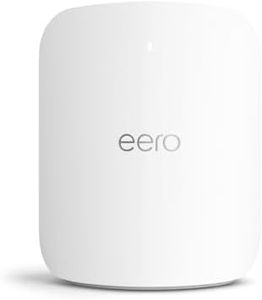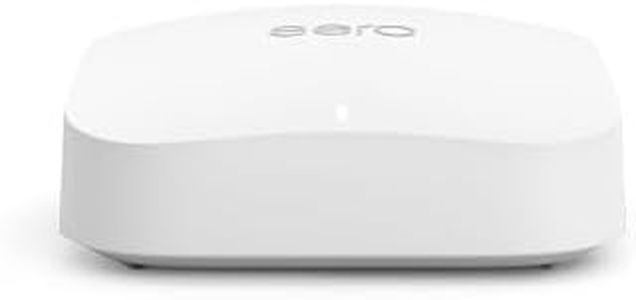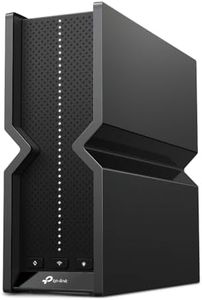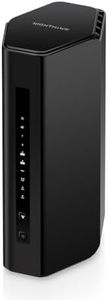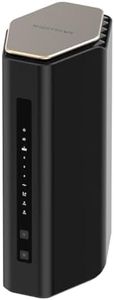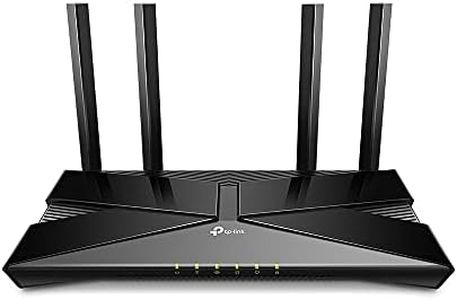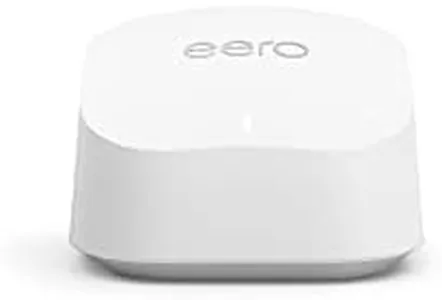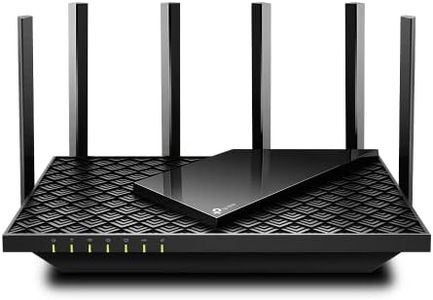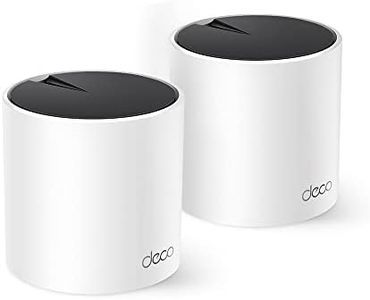We Use CookiesWe use cookies to enhance the security, performance,
functionality and for analytical and promotional activities. By continuing to browse this site you
are agreeing to our privacy policy
10 Best Router For Smart Home
From leading brands and best sellers available on the web.Buying Guide for the Best Router For Smart Home
Choosing the right router for a smart home is an important step to ensure smooth and reliable internet connectivity throughout your space. Smart homes typically have multiple connected devices—such as lights, cameras, speakers, thermostats, and more—that all require consistent and stable Wi-Fi. A router acts as the central hub for all your wireless communications. Picking the right one means considering your home's size, the number of connected gadgets, and the types of activities you do online. Understanding the key features will help you match a router to your unique needs, making your smart home experience more seamless.Wi-Fi StandardThe Wi-Fi standard, such as Wi-Fi 5 (802.11ac) or Wi-Fi 6 (802.11ax), determines how fast and efficient your home network is. Newer standards mean better speed, improved ability to handle many devices at once, and generally more reliable coverage. Wi-Fi 6 is designed for environments with many connected devices, making it a great match for smart homes. If your household has only a handful of devices and mostly does browsing or streaming, Wi-Fi 5 may still be sufficient. But for larger homes with lots of connected gadgets, opting for Wi-Fi 6 or beyond will help ensure everything runs smoothly.
Number of Bands (Dual-Band, Tri-Band)Router bands refer to how many frequency channels the router can use to send data: commonly 2.4GHz and 5GHz. Dual-band routers can use both, while tri-band routers add an extra 5GHz channel. More bands help distribute network traffic, reducing congestion when multiple devices are connected. If your smart home has a moderate number of devices or mostly standard usage, a dual-band router may be fine. For busy homes with lots of gadgets or heavy streaming and gaming, a tri-band router can offer better performance and less interference.
Coverage AreaCoverage area tells you how far your router's Wi-Fi signal can reach. Routers have different strengths: some are built for small apartments, while others are made for large homes. If you have a small space, almost any modern router will do. But if your home is large or has thick walls, you'll need a router with a wider range, or consider a router that supports mesh networking to ensure strong coverage everywhere.
Mesh Networking SupportMesh networking lets you link several units together to blanket your whole house with Wi-Fi. Each unit (node) acts as part of a single network, making sure you don’t lose connection as you move from room to room. Mesh systems are especially helpful in multi-story or sprawling homes where a single router can’t reach every corner. If your smart devices are spread across a big or complex layout, a router with mesh support is the best way to avoid dead spots.
Device Capacity (Concurrent Connections)Device capacity indicates how many gadgets your router can support at the same time without slowing down. Smart homes often have 10, 20, or even more devices, including phones, TVs, and smart sensors. Older or basic routers can become overloaded easily. Check for routers with technologies like MU-MIMO and OFDMA, which help manage many devices at once. Pick a router that advertises support for a high number of connections if your smart home setup is large, ensuring every device stays online reliably.
Security FeaturesSecurity features protect your home network and all the connected devices from unwanted access and cyber threats. Look for routers with up-to-date encryption standards (like WPA3), automatic firmware updates, firewall options, and simple ways to set up guest networks. For a smart home, where more devices mean more possible vulnerabilities, strong security features give peace of mind and keep your data safe. Prioritize routers that make security easy to manage for regular users.
Parental Controls and App ManagementParental controls and easy app management let you control your smart home network with your phone, set rules for device usage, and monitor your network. These features are useful for families who want to manage screen time or for anyone who wants to quickly make changes to their network settings. If you value convenience and oversight, look for routers that provide user-friendly apps and good parental control options.
